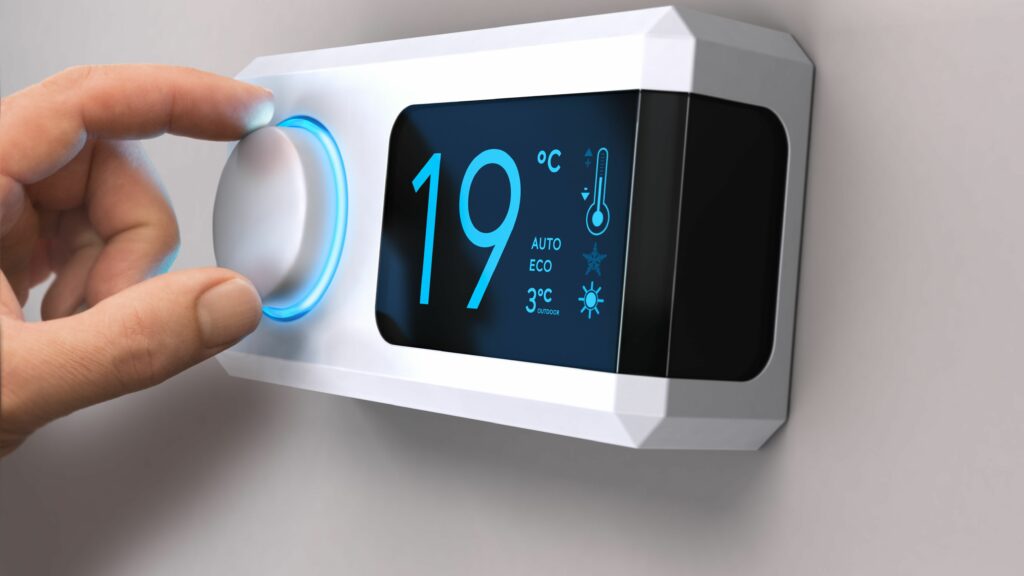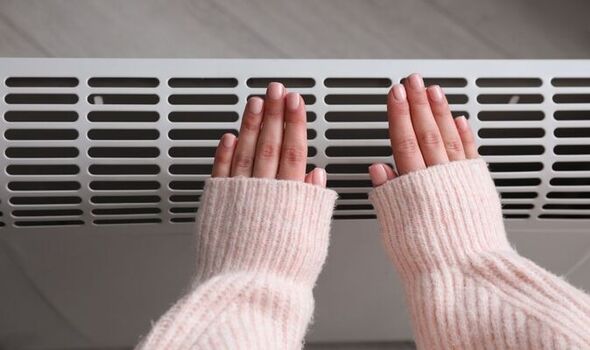The cost of living crisis is having a significant impact on households across the UK, with energy bills being one of the biggest areas of concern. The average household energy bill is now over £2,000 per year, and this is likely to remain high far into the future.
There are a number of things that households can do to reduce their energy bills, but it is important to remember that there is no one-size-fits-all solution. The best way to save money on energy will vary depending on your individual circumstances and needs.
Right now one of the most pressing concerns for homeowners and renters alike is how to keep their homes warm without breaking the bank. Heating a room can be expensive, but there are ways to keep costs down while still staying cozy. In this article, we will explore some of the cheapest ways to heat a room.

What Are The Most Common Ways We Heat Our Homes In The UK?
Gas central heating, oil-filled heaters, and electric heaters are all common heating options in the UK. Here are some details on their usage and cost in the UK:
Gas central heating:
Usage: Gas central heating is a popular heating option in the UK, as many homes have access to natural gas through the National Grid. Gas central heating is typically used to heat entire homes, rather than individual rooms. The system is controlled by a thermostat, which can be set to maintain a constant temperature throughout the home.
Cost: The cost of running a gas central heating system in the UK can vary depending on factors such as the size of the home, the efficiency of the boiler, and the cost of natural gas in the area. On average, the cost of running gas central heating is around £700-£1,200 per year in the UK, but this can vary significantly depending on the aforementioned factors.
Oil-filled heaters:
Usage: Oil-filled heaters are portable heaters that are filled with oil and use electricity to generate heat. They are often used as a supplemental heating source for individual rooms or small spaces in the UK, particularly in homes without central heating.
Cost: The cost of running an oil-filled heater in the UK can vary depending on factors such as the size of the heater, the amount of time it is used, and the cost of electricity in the area. On average, the cost of running an oil-filled heater is around £150-£250 per year in the UK for moderate use. Unlike electric heaters, Oil heaters retain heat for longer and therefore can sometimes be more cost effective.
Electric heaters:
Usage: Electric heaters are a popular heating option for small spaces or individual rooms in the UK. They work by using electricity to generate heat, which is then dispersed into the room.
Cost: The cost of running an electric heater in the UK can vary depending on factors such as the size of the heater, the amount of time it is used, and the cost of electricity in the area. On average, the cost of running an electric heater is around £150-£250 per year in the UK for moderate use.
It’s worth noting that in the UK, the cost of energy is higher than in some other countries, so heating costs may be higher overall. Additionally, the cost of each heating option can vary depending on the specific model and brand.
Why Is A Thermostat Important When Trying To Control Your Heating Costs?
A thermostat is an essential tool for controlling your heating costs because it allows you to regulate the temperature in your home and avoid unnecessary energy consumption. Here are some reasons why a thermostat is important for controlling your heating costs:
- It helps you maintain a consistent temperature: A thermostat allows you to set the temperature that you want in your home, and then maintain that temperature consistently. This means that you won’t waste energy by overheating or underheating your home, which can lead to unnecessary energy consumption and higher heating costs.
- It helps you save energy: By using a thermostat to maintain a consistent temperature, you can avoid energy waste caused by frequent adjustments to your heating system. This can lead to significant energy savings over time, which can help you keep your heating costs down.
- It helps you control your heating schedule: Many thermostats allow you to program heating schedules that align with your daily routine. For example, you can program your heating to turn on before you wake up and turn off when you leave for work. This means that you can avoid heating an empty house and save energy in the process.
- It helps you monitor your energy consumption: Some thermostats come with energy monitoring features that allow you to track your energy usage over time. This can help you identify areas where you can cut back on energy consumption and reduce your heating costs.
Overall, a thermostat is an essential tool for controlling your heating costs. By using a thermostat to maintain a consistent temperature, save energy, control your heating schedule, and monitor your energy consumption, you can keep your heating costs under control and avoid unnecessary energy waste. If you want to be more energy efficient in the long run you should think about getting a new smart thermostat which can cost between £100 – £300 but this means you can manage your thermostat schedule – you can accurately measure your usage and you can even turn your heating on and off based on your location.

How Can You Keep A Room Warm Efficiently?
Keeping a room warm is important for maintaining a comfortable living environment, especially during the colder months and also to save costs. Here are some tips on how to keep a room warm:
- Insulate the room: Proper insulation is essential for keeping a room warm. This includes ensuring that windows and doors are sealed properly, and that the walls and ceiling are adequately insulated. This will help prevent heat from escaping and keep the room warm.
- Use curtains or blinds: Thick curtains or blinds can help insulate the room further by preventing heat from escaping through the windows. Close the curtains or blinds in the evening to keep the warmth inside the room.
- Use draft excluders: Draft excluders can help prevent cold air from entering the room through gaps around doors and windows. They can be placed at the bottom of doors or windows to block drafts and keep the room warm.
- Use rugs or carpets: Bare floors can feel cold and make a room feel less warm. By placing a rug or carpet on the floor, you can help insulate the room and make it feel more comfortable.
- Use a space heater: A space heater can be a cost-effective way to heat a room. They come in a variety of sizes and types, including electric, gas, and oil-filled heaters. Electric heaters are often the most affordable and easiest to use. Using a heater in one room means you are not expending energy to heat all the there areas of the house which you are not using.
- Think about warming yourself: More on this below – but you should also think about how you can warm yourself rather than warming your room to manage costs..
- Let the sun in: Open curtains or blinds during the day to let sunlight in, which can help warm the room naturally.
By following these tips, you can effectively keep a room warm and comfortable while minimising heating costs.

What Do You Mean When You Say Warm Yourself Rather Than The Room?
When it comes to managing heating bills, one of the cheapest ways to stay warm is to focus on heating yourself rather than the entire room. This approach can help you save money on your energy bills, while still keeping you comfortable and warm.
Here are some tips on how to heat yourself rather than the room:
- Layer your clothing: Wearing multiple layers of clothing can help trap heat close to your body, keeping you warm without having to heat the entire room.
- Use a heated blanket or pad: A heated blanket or pad can be used to warm up your bed or favorite chair, without having to heat the entire room.
- Drink hot beverages: Drinking hot beverages, such as tea, coffee or hot cocoa, can help warm you up from the inside out.
- Use a hot water bottle: A hot water bottle can be used to warm up your bed or keep you warm while sitting on the couch.
- Use an electric heater: If you need to heat a specific area, such as your home office, consider using an electric heater to keep you warm while you work. Just be sure to turn it off when you’re not using it to save energy.
- Close doors and windows: If you’re only heating a specific area of your home, such as your bedroom, be sure to close the doors and windows to prevent heat from escaping to other areas.
By focusing on heating yourself rather than the room, you can save money on your energy bills while still staying warm and comfortable. Remember, every degree that you lower your thermostat can result in significant savings over time. So, by combining these tips with a lower thermostat setting, you can achieve even greater savings on your heating bills.

Should I Change Energy Suppliers?
Although changing energy suppliers was not really an option in 2022 and early 2023 as all unit costs were are the energy cap – The energy landscape is now changing and better deals are on the horizon. Therefore changing energy supplier should be considered again as it is usually one of the most effective ways to cut your heating costs. Here are some reasons why:
- Lower prices: Energy prices vary between different suppliers, and some may offer better deals than others. By switching to a supplier with lower prices, you can reduce your energy bills and cut your heating costs.
- Fixed rate tariffs: Many energy suppliers offer fixed rate tariffs and offers , which means that you pay the same amount for your energy over a set period of time. This can help you budget for your energy bills more effectively and avoid unexpected price increases.
- Renewable energy: Some energy suppliers offer renewable energy options, which can be a more environmentally-friendly and cost-effective option for heating your home. Renewable energy is becoming increasingly popular in the UK, and many suppliers offer green energy tariffs that allow you to support renewable energy sources.
- Customer service: If you are unhappy with the customer service provided by your current energy supplier, switching to a new supplier can be a good option. Different suppliers have different levels of customer service, and it’s important to choose one that you are comfortable with.
- Cashback and rewards: Many energy suppliers offer cashback or rewards for switching to their services. This can provide an additional financial incentive to switch and help you save money on your heating costs. Check out our referrals board for energy supplier referral codes.
Overall, changing energy supplier is a smart move if you want to cut your heating costs. By switching to a supplier with lower prices, fixed rate tariffs, renewable energy options, good customer service, or rewards, you can reduce your energy bills and save money on heating costs. It’s important to compare different energy suppliers and their offers before making a decision, and ensure that you choose a supplier that meets your needs and preferences.
How Can I Make My Home More Energy Efficient?
Attic insulation and wall cavity insulation can be effective ways to manage heating costs in the UK. Proper insulation can help prevent heat from escaping through the roof and walls, which can result in significant energy savings and lower heating bills.
Attic insulation involves adding insulation to the floor or roof of the attic space to prevent heat from escaping through the roof. This can be done by adding layers of insulation material, such as fiberglass or cellulose, to the floor or ceiling of the attic. Attic insulation can help reduce heat loss by up to 25%, which can translate into significant energy savings over time.
Wall cavity insulation involves filling the gap between the interior and exterior walls with insulation material. This can be done by injecting insulation material into small holes drilled into the walls. Wall cavity insulation can help reduce heat loss by up to 35%, which can result in significant energy savings and lower heating bills.
In the UK, there are several government schemes and initiatives that offer financial assistance to homeowners for insulation upgrades. For example, the Green Homes Grant scheme, which ran until March 2022, offered vouchers worth up to £5,000 for insulation upgrades and other energy efficiency improvements. The Energy Company Obligation (ECO) scheme also provides funding for insulation upgrades for eligible households.
In summary, attic insulation and wall cavity insulation can be effective ways to manage heating costs in the UK. By properly insulating your home, you can prevent heat from escaping through the roof and walls, resulting in significant energy savings and lower heating bills. Be sure to check for any available government schemes or initiatives that can help cover the cost of insulation upgrades.

Summary
In conclusion, there are several ways to heat your room while keeping your energy bills low. Choosing the right heating method, such as gas central heating, oil-filled heaters or electric heaters, can help you save money on your heating costs. In addition, using a thermostat to control the temperature and changing suppliers can also help you cut down on your energy bills. However, one of the cheapest ways to manage your heating costs is to focus on heating yourself rather than the entire room. By layering your clothing, using a heated blanket or pad, drinking hot beverages, using a hot water bottle, and closing doors and windows, you can stay warm and comfortable while reducing your energy consumption. Finally, attic insulation and wall cavity insulation can also be effective ways to manage heating costs in the UK, by preventing heat from escaping through the roof and walls. By following these tips and taking advantage of any available government schemes or initiatives, you can keep your room warm and cozy without breaking the bank.















Recent Comments